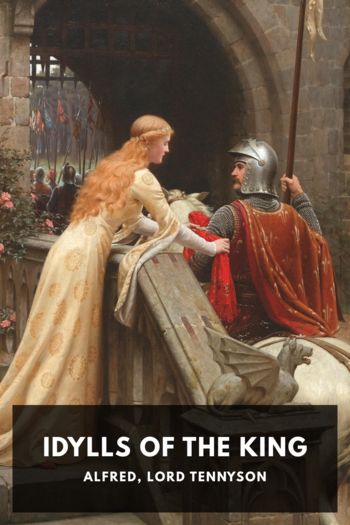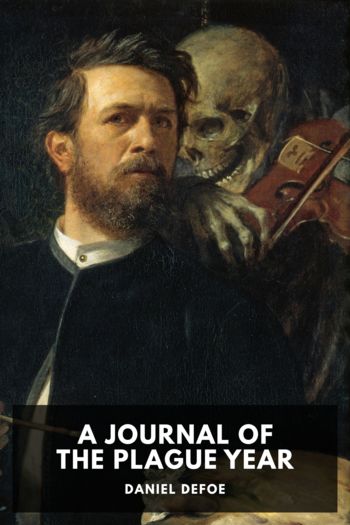Selkirk's Island, Diana Souhami [the best books to read TXT] 📗

- Author: Diana Souhami
Book online «Selkirk's Island, Diana Souhami [the best books to read TXT] 📗». Author Diana Souhami
and having given them a dram of Rum or Brandy or some other strong Liquor desired all who were willing to go along with him upon their own accounts exclusive of the Owners to go on the quarter-deck.†
It was an invitation to turn pirate and abandon any vestigial obligation to the agreements made. But ‘no more than twenty-eight Men and Boys, and most of them Landmen’ were willing to go along with him. The others deserted in Christian Martin’s ship. The purser Edward Morgan his partner in crime, went, so did William Funnell, John Welbe and thirty-one men. John Ballett the surgeon was the only officer to stand by him.
Their departure was violent. Dampier said Bellhash, the Master, ‘took me by the Throat, and Swore if I spoke a Word they would Dash my Brains out’. They turned all prisoners ashore to prevent him finding the route home. They demanded the keys to the powder room and arms’ chest. When he refused to hand these over, Morgan said, ‘“We have Iron Crows on Board, they are as good Keys as we desire,” and with that broke ’em open.’ They stripped the ship of arms, food, liquor, silver plate and gold and took its licence, its Letter of Marque. As they sailed off, ‘that Buffoon Toby Thomas by name, said, “Poor Dampier, thy Case is like King James, every Body has left thee.”’†
With two men at the pumps, bailing out, the St George continued to cruise. Someone stuffed its holes with tallow and charcoal ‘not daring to drive in a Nail, for fear of making it worse’. The four great guns which stood between decks, were put in the hold. There were no men to manage them and there was no ammunition.
Dampier headed ignominiously for home. The only prize his riff-raff crew now aimed for was life. They had to take a ship in which to sail ten thousand miles across the South Sea. In February they hijacked a Spanish brigantine.* Dampier headed west in it. He abandoned the decrepit St George at anchor.
The going was worse than hard. Provisions looted from coastal towns did not last. They drank water thick with duck weed and were rationed to less than half a pound of flour a day per man ‘and that very full of Vermine, Maggots and Spiders’. They scalded this concoction with water then ate it. They could not sleep for hunger, so they drank the green water. ‘This would satisfie us a little at the present, so that we could slepp; but as soon as we waked, we always found ourselves as hungry as before.’
At Batavia, because Dampier had no commission to show, he was arrested as a pirate and his ship impounded.* He spent more than a year in gaol before being sent back to England at the end of 1707 with nothing in his pockets at all.
A handful of other survivors had straggled back. Funnell’s party arrived in August 1706 ‘being but eighteen out of one hundred and eighty-three which went out with us’. They had sailed across the South Sea with no doctor, medicines or carpenter, no anchors, cables, or boat. All their experiences were appalling. They were consistently desperate for water and food. At the island of Guam when they tried to scavenge something to eat, naked men in boats followed them ‘menacing at a distance with their Paddles’. They endured gales and monsoon winds: ‘the Sea took us a-head, a-stern and on both sides, that we were always almost covered with Water.’ At the island of Manipa, colonised by the Dutch, the Governor refused them victuals, starving though they were.
They reached the spice island of Amboyna at the end of May 1705.* The Dutch towed them in and took their vessel. According to Sheltram and Clift, Morgan made ten thousand pounds for himself by selling the silver plate, bullion and jewels he had stolen and hidden away. Those who could not bribe their keepers were interned, badly treated and fed inedible meat. At night they were plagued by mosquitoes. ‘We were forced to put ourselves in a Bag, before we could go to sleep.’
At Batavia they met up with some of Clipperton’s men. Morgan sold the owners’ share of the plunder for £600 then made his own way back to London. Those without money lived off their wits. Survivors were shipped home with the Dutch East India fleet.
For the London owners the adventure was a disaster: both ships lost and no booty. Thomas Estcourt had died in 1704 at the age of twenty-three, and willed his estate to his younger sister Elizabeth. She had married a Richard Cresswell. The Cresswells listened to accounts from survivors, like William Sheltram and Ralph Clift, of theft, plunder, mutiny and lawlessness. They suspected fraud and deception, particularly from Dampier and Morgan.
They began litigation that went on for years. They would claim against any treasure Dampier might ever accrue. Those who had sailed with him, condemned him for bad language, drunkenness, mismanagement, dishonesty, and failure to take the rich prizes he promised.†
1707 They would Spare no Stranger
ON DAYS when Selkirk did not scan the south side of The Island he feared he might have missed the ship of rescue or the manoeuvres of an enemy sail. High at his lookout above the Bay, the air was cool when the valley was humid, there was shade from the luma and gunnera and the huge ferns. Away from the enclosing valley, he could see the fracture of the archipelago, Santa Clara, the little broken islets, the peaks and ridges of mountains stretching out.
It occurred to him that England might have been defeated in the war, that no friendly ship might again come to these seas, that the whole of the South Sea might now be occupied by Spain. Three times from this vantage point he saw a ship, far out, circle the island then traverse the bay from west to east. It was as if





Comments (0)